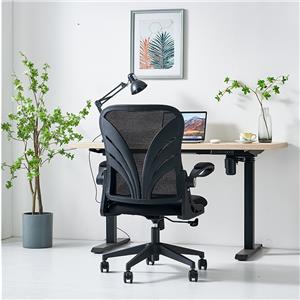How to adjust the ergonomic chair?
Ergonomic chairs come in a variety of styles and price points. However, if you don't use it properly, you won't get more for your money. Your ergonomic chair should be adjustable and you should optimize it to fit your body. Don't assume it will fit your proportions perfectly when it arrives. Some functions require lowering or raising, or moving forward or backward. Make sure your chair is right for you by checking the following:
Lumbar Support: Sitting for long periods of time without lumbar support can cause laxity and tension in the lower spine structures. Ergonomic chairs should have lumbar adjustment (height and depth) so you can bend inwards with proper lower back support.
Armrests: The armrests of an office chair should be adjustable. They should allow the user's arms to rest comfortably with their shoulders relaxed. The elbow and forearm should be lightly supported, and the forearm should not lean against the armrest when typing.
Backrest: A height-adjustable backrest is required to support the natural curve of the spine, with special attention to the curve of the lumbar spine.
Height: The seat height of an office chair should be easily adjustable. Pneumatic adjustment levers are the easiest way. You should have your feet flat on the floor or a footrest, your shoulders relaxed, and your pelvic angle in an open position.




